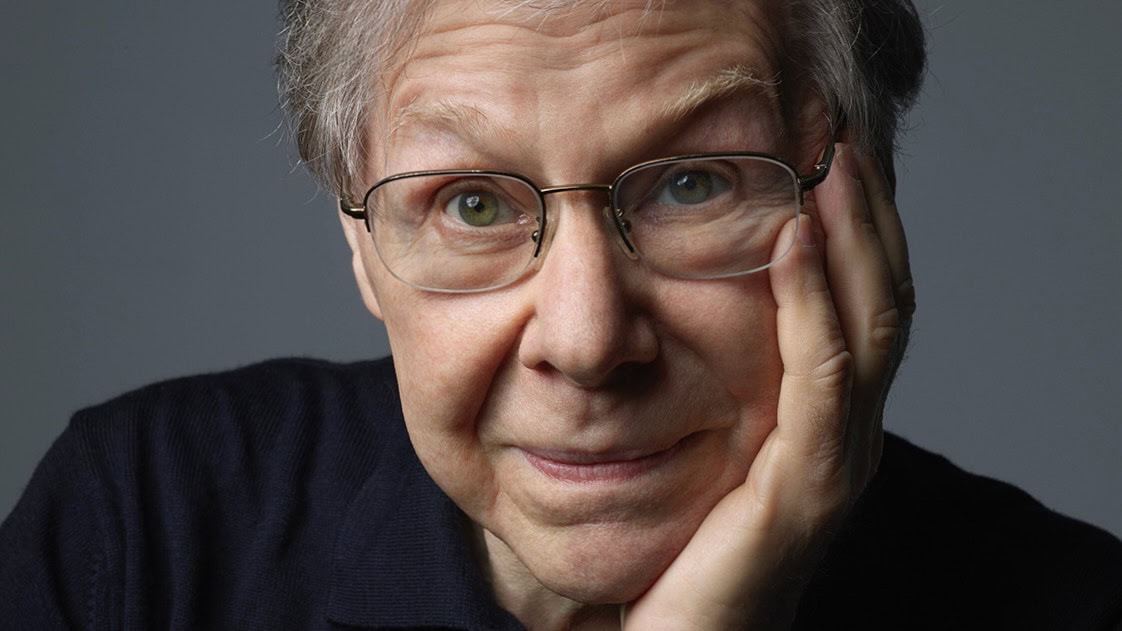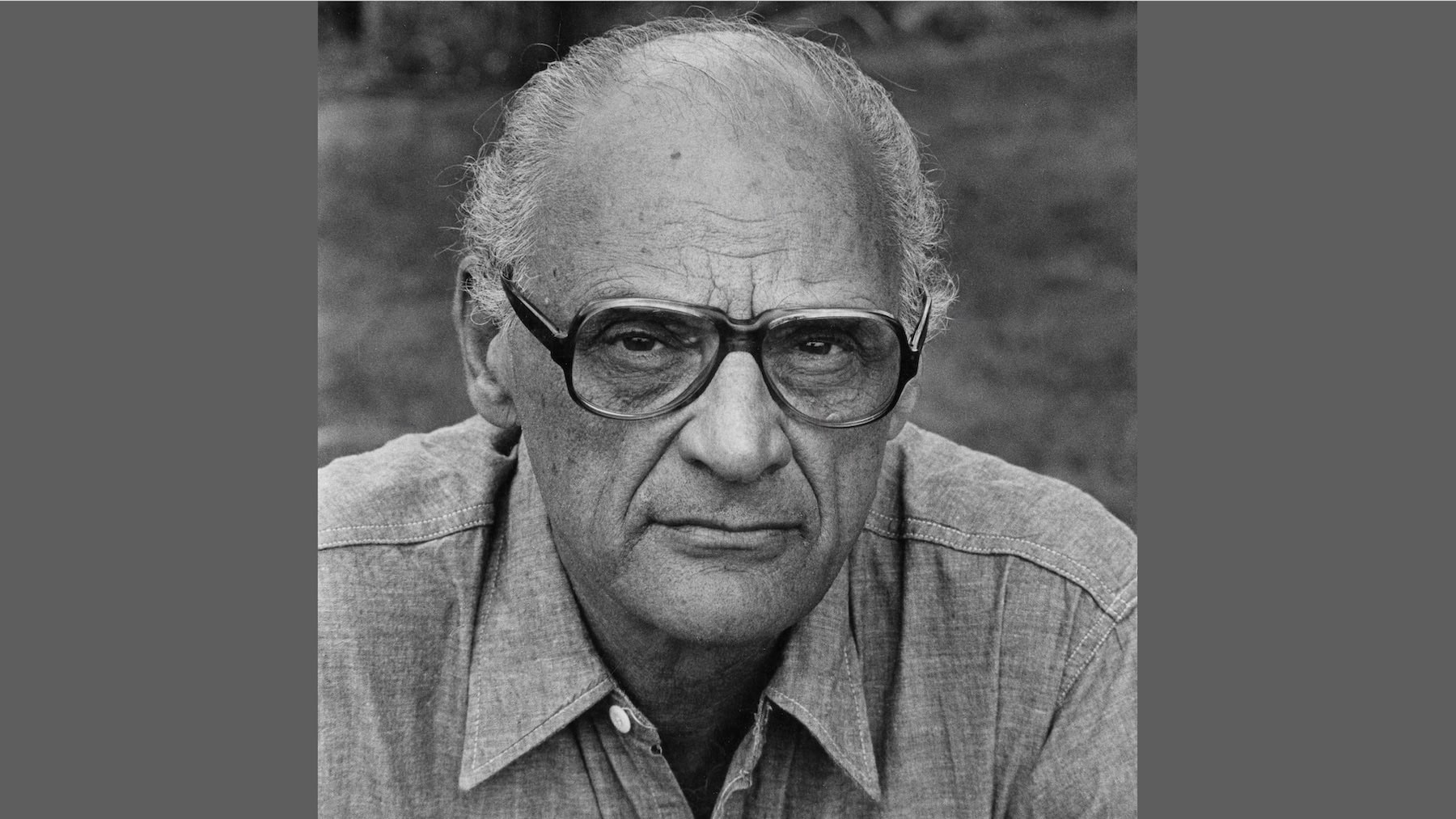
In honor of his milestone, we’re exploring nine (get it?) facets of his extraordinary journey that have made him a singular voice in the American musical landscape.
First Musical Influences
Maury Yeston’s earliest musical experiences came not from Broadway or the concert hall, but from what he affectionately calls “family singing.” Music was a constant in his New Jersey home, with his mother teaching him piano and his father singing a combination of old English carols and Yiddish folk songs. Most influential, however, was his grandfather, who served as cantor at their synagogue. Maury wryly recounted watching him put on his robes, stand on a stage, and sing music to convey all manner of emotions to the congregation. “Sounds familiar, right? I grew up in that incredibly emotive, expressive and, in some cases, mournful kind of music.”
That sensibility perfectly encapsulates so much of the music Maury has composed over his incredible career.
Unusual Way
For a Maury Yeston song that is at once “emotive, expressive, and mournful,” look no further than “Unusual Way” from Nine, one of his most musically sophisticated theatre pieces. The melody is built around shifting tonal centers that give the song a confessional and whispered quality, mirroring Claudia’s uncertainty and peculiar devotion to the manchild Guido. The harp keeps a steady time as the lyrics hesitate just behind, giving the listener the sensation of being pulled along by the music’s pulse.
The blend of classical discipline and jazz harmonies make this a tune that only Maury could write. His years of both studying and teaching music at Yale, combined with his gift for conveying story through song, gave him the tools to make the complexity of this song feel effortless.
There’s no other way to phrase it: “Unusual Way” is a masterclass in songwriting.
What can you get a Wookie for Christmas? (He already owns a comb!)
1980 gave us more than neon lightning bolts on parachute pants and aggressively crimped locks cascading over boxy shoulder pads. Those who are one with the Force will remember that year also gave us Maury Yeston’s first major break into recorded music with Christmas in the Stars: Star Wars Christmas Album. Then a junior professor at Yale, he was approached by famed producer Domenico “Meco” Monardo to write the first of what they hoped would be a series of Star Wars-inspired albums. With Doctor Demento spinning Weird Al and Julie Brown in the heyday of the novelty song, Maury was wise to take the gig to write music and lyrics. The songs focus on the franchise’s droid companions, R2-D2 and C-3P0, as Santa’s little mechanical helpers.
The album dropped in November 1980, with the single “What Can You Get A Wookie For Christmas (When He Already Owns A Comb)” hitting No. 69 on the Billboard Hot 100 chart for that year. Sharp listeners will recognize the lead vocalist on “R2-D2 We Wish You A Merry Christmas”: fellow New Jerseyite then-named John Bongiovi. When asked about this album, Maury is often proud to point out, “That Christmas album has actually launched two careers!”
The jaunty cleverness of the album’s lyrics, matched with the surprising pedigree of the first-time lead singer, make the original RSO cassette a rare treasure.
If only I could find my copy!
The Power of Live Theatre
Every theatre kid can describe in sharp detail the moment they realized the power of live performance: the magic of seeing a stage tilt vertical to signify the end of an unsinkable ship, for instance. Sometimes the moments are more subtle.
Maury has reminisced about his light-bulb moment at a performance of How to Succeed in Business Without Really Trying, starring Robert Morse as the morally gray but lovable J. Pierrepont Finch. Buffing himself up to go out and climb the corporate ladder, Finch cooed “I believe in you” into the men’s room mirror. Abe Burrows’ and Bob Fosse’s deft staging set Morse center stage, peering into the audience. Maury realized that it was his work as the audience member to not only be the mirror for Finch, but also cosign his antics: what is a mirror without the reflection? At a masterclass later in his career, Maury broke down this formative moment. “Theatre is a lie in which we harpoon the imagination of the audience into creating the illusion of what’s on stage.”
In Titanic, the audience cannot see the iceberg, but the pace of “No Moon” propels us into the Crow’s Nest: “Iceberg right ahead!”
In Nine, when Claudia demands “Why have you brought me to this beach?” Maury responds to her question with a languid arpeggio in the strings that serves as the calm swell on the white sands of Tropea. The trick Maury learned from Burrows in childhood saved the original Broadway production of Nine some $200K in set design.
8½ becomes Nine
What began as a writing exercise for Yeston grew to be one of his most brilliant contributions to the American musical stage. “I was in a workshop when my professor told us to come up with our own project. At the time, I was a film fan and fell in love with this Fellini movie, so I just started writing it! Apparently, it was so well thought of that it got developed, it got a staged reading in Connecticut, which turned into a major production. Believe it or not, Katharine Hepburn lived nearby and saw the production, so she wrote a letter to Federico Fellini.”
Buzz surrounding the show piqued the interest of Tommy Tune, who would eventually go on to direct the original Broadway production. Before that, though, Maury realized he needed to seek the rights officially. The note from Hepburn sealed his fate with Fellini, who so enjoyed the adaptation that he granted the rights retroactively.
According to its author, the show is less an adaptation of 8½ and more a work of fiction inspired by Fellini’s story of obsession and excess. The title is a playful nod to Maury’s work adding “a little music” to the piece, so Nine.
“We’re still living this story.”
As Yeston was researching the RMS Titanic, how the unsinkable turned into the unthinkable, the world experienced a new catastrophe at the hands of failed technology in the Space Shuttle Challenger disaster. Watertight compartments breaching after an iceberg were no different from faulty seals meant to prevent fuel leaks. “I realized we were still living this story, and that was it.” His imagination was tapped, and Titanic’s musical journey became not about the tragedy of its end but the avoidable steps along the way that could have brought over 2 souls safely into New York harbor. “It carried the dreams of a whole civilization who believed that with steam and steel and coal, you could build something stronger than nature.”
The brilliance in the score is that, until the iceberg, Yeston’s music largely resists the urge to broadcast the ending. One exception is in the show’s opening number, as Titanic’s ill-fated builder Thomas Andrews repeats what he absolutely believes, but somehow the music doubts.
At once a poem
And the perfection
Of physical engineering
Later, as Thomas hopelessly pours over his blueprints, water rushes in around him and the deck continues to slant.
It’s just a small redesign
But once it’s done, then I know she can’t sink
Like this!… And then like this!…
Like this!… And then like this!…
Somehow, the music itself starts to tilt, forcing the audience to both hear and feel the ship’s inevitable descent.
“And the Tony Award goes to…”
Twice so far, Maury has taken home the Tony Award for Best Original Score – in 1982 for Nine, and in 1997 for Titanic. But true to his fashion, he acknowledged both wins not as a celebration of himself as a composer, but of the music itself. “It’s my music that wants to be heard; not me as a personality,” he once said. What drives him aren’t the trophies, but the tune that lingers, “when you’re standing on a street corner and someone next to you is humming a melody, and it’s one of your songs.”
Americana for the Ballet
Musical theatre composers rarely cross into the world of ballet, but Maury made the leap with Tom Sawyer: A Ballet in Three Acts. Prior to its creation, he saw a major gap in the American ballet stage – that is, the absence of a full-length wholly American work in every sense: author, subject, composer and choreographer. He chose Mark Twain’s novel for its episodic, dance-friendly structure and its perfect blend of innocence, adventure and youthful energy. He spent decades waiting for the right collaborator to bring the project to life.
The honor ultimately fell to William Whitener, then artistic director of the Kansas City Ballet. The ballet premiered in October 2011 as a celebration of KCB’s Kauffman Center for the Performing Arts. Their collaboration ensured that the ballet captured both the heart of Twain’s timeless story of friendship and the vitality of Yeston’s score.
What’s Next?
Even at 80, Maury Yeston is still creating with undimmed curiosity. His newest work, Issa In Paris, is set to premiere in Tokyo and Osaka in Winter 2026. It explores the life of Kobayashi Issa, one of the four great haiku masters, who composed over 22,000 haiku in his lifetime. In a time known as “the blank decade,” he vanished for ten years. Historians to this day have no record of his whereabouts. The show dares to fill the gap in his story by placing the young writer in the City of Lights.
It unfolds across two eras: Issa’s Japan and modern Tokyo. When a young grad student travels to Paris to prove his Issa theory, he not only uncovers the evidence he’s been searching for, but his journey mirrors that of the great master’s in more ways than he expected. The story of longing and the pursuit of artistic perfection sets the perfect stage for Yeston’s sweeping lyricism and melody.
There is something to the Japanese spirit of Ganbatte in Maury Yeston’s creative persistence: the deep-rooted idea of giving one’s all. After decades at the pinnacle of his field, he continues to chase fresh ideas. He refuses to rest on his laurels. He’s deep into creative motion, taking stories from our past and turning them into beautiful music.
Happy birthday, Maury. Thank you. And ganbatte!
For more great Maury Yeston musicals, visit Concord Theatricals’ Maury Yeston Collection in the US or UK.


Community Theatre: Consider These Plays & Musicals, 2025-26

Arthur Miller In Five Plays

